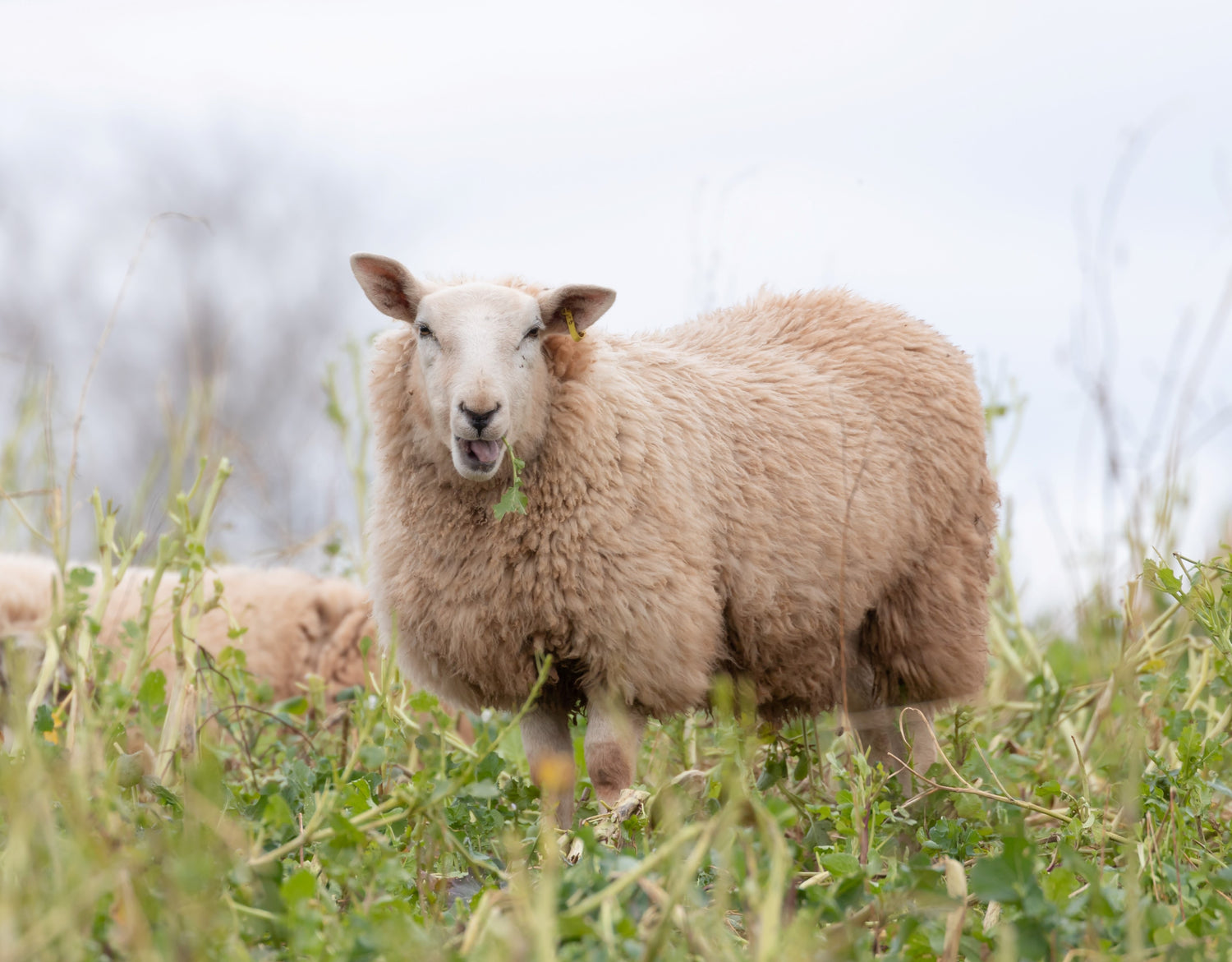Wools of the UK: Cheviot

One of the older breeds in the UK, the Cheviot is a common sight across the county and has contributed to both wool and meat markets over the last 700 years.
Colour
Most commonly white, but there are flocks of black/coloured Cheviots as the demand for colours crafting fleece has grown.
Staple Length
100mm
Micron Count
30 – 35mic
Country of Origin
United Kingdom, specifically the Cheviot Hills between Northumberland and the Scottish Borders.
History
The first mention of the Cheviot (or what we would come to call the Cheviot) was of a flock of sheep living in the Cheviot hills in the 1300’s; they were kept for their valuable wool and were prized due to being hardy enough to survive in the harsher climates. As with many breeds the original Cheviot was ‘improved’ by crossbreeding them with Merinos in the 1400’s, but this success was limited. The Cheviot that had developed in the hills was strong and surefooted, having adapted perfectly for its location. The introduction of Merino bloodlines meant that the wool quality improved (which was great news for income) but the sheep became less hardy and were prone to foot rot.
It wasn’t until the late 1700’s that the Cheviot officially got its name when it piqued the interest of John Sinclair (one of the British Wool Society founders) when he found that when crossed with Leicesters they did well in the more inhospitable areas of Scotland and continued to thrive, producing a larger fleece and more meat. This is the breed that is known today as the North Country Cheviot. The North Country Cheviot can be split into Park type (larger, heavier sheep) and Hill type (a mountain type). There are also black/coloured variants of these which have been bred from recessive genes.
Uses
The fleece has been a staple of the wool industry for many years, being used in handicrafts as well as for carpet making and stuffing. Compared to many natural fleeces the Cheviot carries a slightly brighter white colouring and is less creamy in colour (though all things are relative!) It is very springy which makes it a good stuffing fibre but also excellent for spinning. The resulting yarn can be much softer than expected, especially when spun with a loose twist; the lofty fibres allow for more air to be trapped which means garments (especially ones made from woollen spun yarns) will be warmer. It's durability also means it is suitable for socks and blankets; items which may get a lot of use and wear.
When it comes to felting the fibre is not a quick-felt like Merino would be, but makes the perfect base for 3D needle felted sculptures. It is also used for backing vegetarian ‘sheepskins’ for its durability.
If you want to try some Cheviot for yourself, you can find it here







